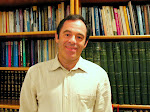.jpg) Although one cannot carry from a courtyard to a courtyard on Shabbat without an eruv (common food), all roofs of the houses are considered one domain, and one can freely carry there, with one limitation only: one roof should not be higher or lower than ten hand-breadths from the other – these are the words of Rabbi Meir. The Sages disagree and say that just as all courtyards are separate areas, so too all roofs are separate areas.
Although one cannot carry from a courtyard to a courtyard on Shabbat without an eruv (common food), all roofs of the houses are considered one domain, and one can freely carry there, with one limitation only: one roof should not be higher or lower than ten hand-breadths from the other – these are the words of Rabbi Meir. The Sages disagree and say that just as all courtyards are separate areas, so too all roofs are separate areas.
We can understand the Sages, but Rabbi Meir's position seems inconsistent: if all roofs are one area, then what does the difference in height of ten hand-breadths matter? – Rabbi Meir is concerned that if people get used to stepping up and down the roofs, they may come to use a mound ten hand-breadths high, situated in a street, for their needs – and there it would clearly be not allowed.
Rabbi Shimon gives a new rule which changes our understanding of the laws of eruv so far: all roofs - and even all courtyards - combine together into one area, and one can carry there – talking about objects which started Shabbat in a courtyard but not in a house. Thus, if an object was in a house at the beginning of Shabbat, the laws and limitations of eruv apply to it. But if it was in a courtyard, then one can take it to another courtyard even without an eruv.
Art: Blue Roofs Rouen by Paul Gauguin (1848-1903)

No comments:
Post a Comment